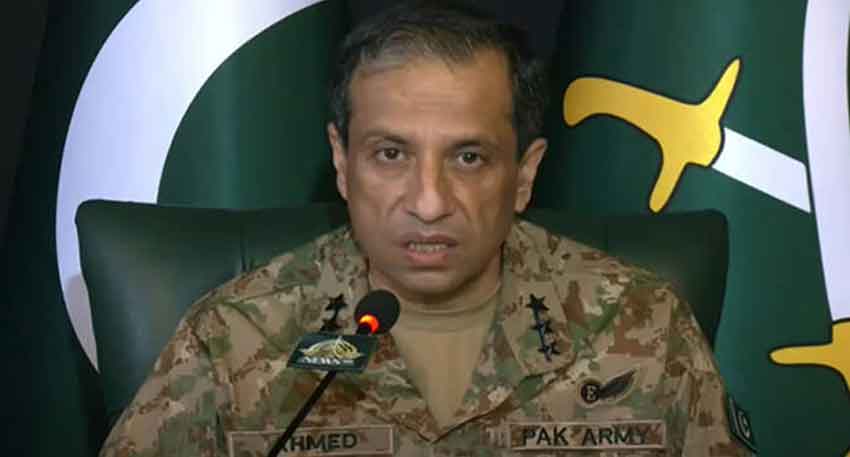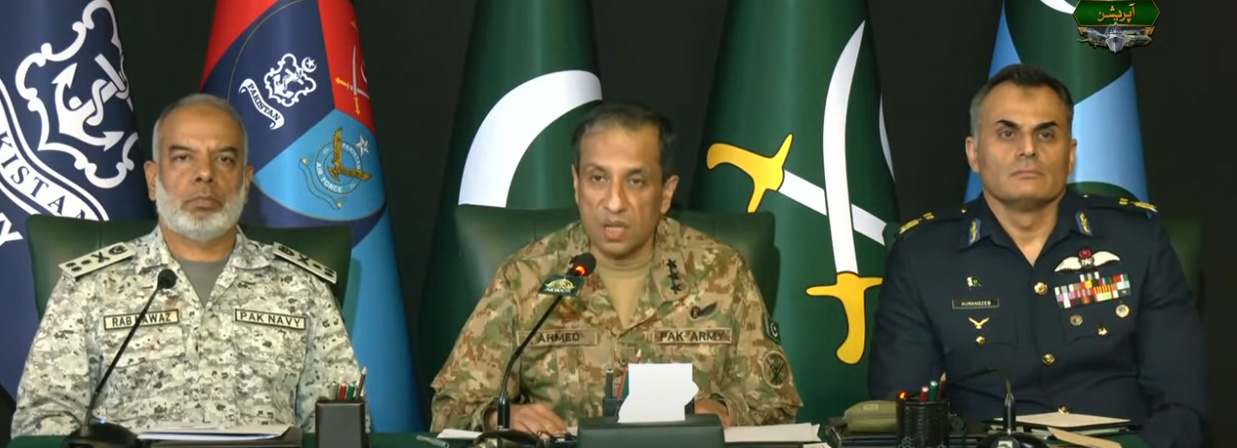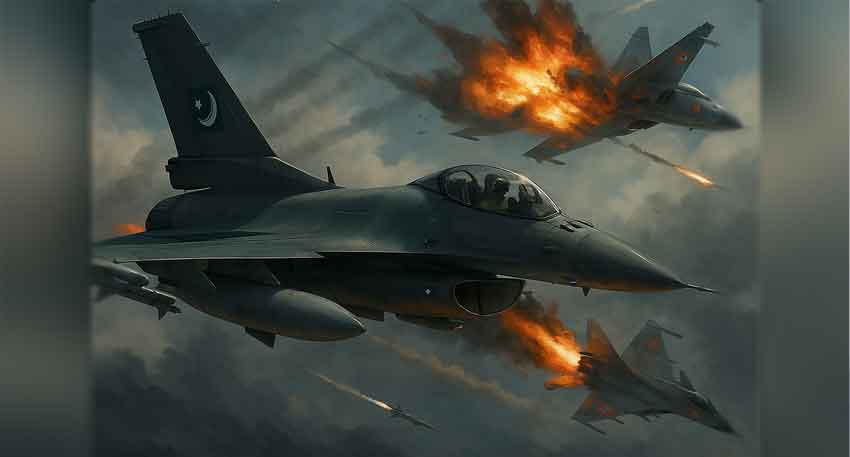
Speaking at a joint press conference alongside officers from the Pakistan Air Force and Navy, the military spokesperson said that Pakistan responded to Indian aggression with Operation Bunyan un Marsoos, delivering a firm and decisive message.
“During the night of May 6 and 7, innocent civilians were martyred as a result of Indian aggression,” he said.
“Our armed forces gave a befitting response to the enemy. We thank Prime Minister Shehbaz Sharif and his cabinet for taking tough decisions, and we are also grateful to the political leadership for putting aside their differences and standing united behind the armed forces,” he added.
He emphasised that the brave and patriotic people of Pakistan stood shoulder to shoulder with the military.
“We are thankful to our resilient citizens. Pakistan’s youth stepped up as frontline soldiers in the information domain and played a crucial role in the cyber battlefield.”
Detailing the Operation Bunyan un Marsoos, the ISPR chief said the armed forces targeted 26 Indian military installations, including air defense systems and terrorist training facilities. Notably, two locations housing India’s S-400 air defense systems were struck.
Also Read: Pakistan’s powerful counterattack forced India into ceasefire, CNN reveals
Among the specific targets hit were Suratgarh, Sirsa, Udhampur, Adampur, Pathankot, Ambala, Bhuj, Bhatinda, Naliya, Barnala, and Srinagar, as well as Beas and Nagrota, where BrahMos missile stockpiles were destroyed.
Command installations of the 10th Brigade and the 80th Brigade were also destroyed. Military elements and their forward positions in Rajouri and Nowshera were neutralized.
Lt. Gen. Ahmed Sharif Chaudhry further said that during Operation Bunyan un Marsoos, armed drones conducted continuous flights deep into Indian territory, including over Delhi and Gujarat.
Simultaneously, Pakistan’s military also launched major cyberattacks as part of the operation.
The DG ISPR also said that India is directly involved in acts of terrorism inside Pakistan. He pointed out that while Pakistan’s armed forces were focused on defending the eastern border, there was a notable surge in terrorist activities in Khyber Pakhtunkhwa and Balochistan, carried out under Indian sponsorship.
“This sharp uptick in violence is irrefutable evidence that India is actively supporting terrorism in Pakistan through its proxies,” he stated.
He added that even the Indian military acknowledged that their installations were destroyed by the Pakistan Armed Forces. “Nowhere in the Indian or international media was there any report suggesting that Pakistan targeted civilian populations,” he emphasised.
The military spokesperson clarified that the desire for a ceasefire came from India. “Pakistan did not request a ceasefire at any point, nor has it violated the ceasefire anywhere along the border,” he asserted.
Vice Admiral Rab Nawaz of the Pakistan Navy stated that during the conflict, the Navy was closely monitoring the movements of the Indian Navy.

He emphasised that the Pakistan Navy was fully prepared to counter Indian aggression during the night of May 6 and 7. “All of Pakistan’s ports remained fully operational throughout,” he added, underscoring the Navy’s state of readiness and vigilance.
Air Vice Marshal Aurangzeb Ahmed revealed that India targeted Pakistani civilian areas using drone aircraft.
Also Read: Pakistan launches operation Bunyan un Marsoos, destroys Indian military installation
When Indian jets carried out aggressive maneuvers, the Pakistan Air Force responded by shooting down the intruding aircraft, achieving what he described as a “6–0 victory” over the Indian Air Force.
He further explained that Indian drones were consistently directed toward civilian zones but were skillfully intercepted and brought down.
Pakistan successfully detected both drones and unmanned aircraft in real-time and employed GPS-jamming systems to neutralize them.
“Our air defense system is strong and highly effective,” he added, noting that Air Chief Marshal Zaheer Ahmed Babar was the strategic mind behind the entire operation.




